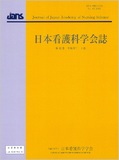Japanese
English
- 販売していません
- Abstract 文献概要
- 参考文献 Reference
要旨
目的:本研究の目的は,看護学生を対象とし,瞑想を中心とするマインドフルネス呼吸法の効果について,カオス解析を用いて脈波の特徴を抽出することとした.
方法:看護学生20名(21〜22歳)をランダムに振り分け,マインドフルネス実施群(Mi群)10名とマインドフルネス非実施群(nMi群)10名とした.10日間を実験期間とし,1日目,5日目,10日目の脈波を測定した.脈波から算出したアトラクタを視覚的に評価し,両群間の安静閉眼・暗算課題時の最大リアプノフ指数を比較した.最大リアプノフ指数は,交感神経活動の賦活によって増大する.
結果:実験10日目のアトラクタの形状は,Mi群は変化が少ないのに対し,nMi群は変化が複雑であった.Mi群の最大リアプノフ指数は1.7以下で推移し,nMi群と比較し有意に低値を示した.
結論:実験10日目のMi群のマインドフルネス実践後に交感神経系が抑制されたことが示唆された.カオス解析を用いた信号処理によりマインドフルネス呼吸法の特徴を評価できる可能性がある.
Purpose: This study aimed to use chaos analysis to extract the pulse wave characteristics on the effects of mindful breathing exercises, mainly meditation, in nursing students.
Methods: Twenty nursing students (aged, 21-22 years) were randomly assigned to either the mindful group (Mi group, n=10) or the non-mindful group (nMi group, n=10). The experiment was carried out for 10 days, and pulse waves were measured on days 1, 5, and 10. The attractors calculated from the pulse wave were visually evaluated, and the maximum Lyapunov exponents while resting with the eyes closed and during a mental arithmetic task were compared between the groups. The maximum Lyapunov exponent increased with sympathetic nervous system activation.
Results: The shape of the attractor on day 10 of the experiment exhibited little variation in the Mi group, whereas the nMi group had more complex changes. The maximum Lyapunov exponent of the Mi group stayed at ≤1.7, which was significantly lower than that of the nMi group.
Conclusion: This suggests that inhibition of the sympathetic nervous system occurred after mindful practice in the Mi group on day 10 of the experiment. Signal processing using chaos analysis could be used to evaluate the characteristics of mindful breathing techniques.
Copyright © 2023, Japan Academy of Nursing Science. All rights reserved.


